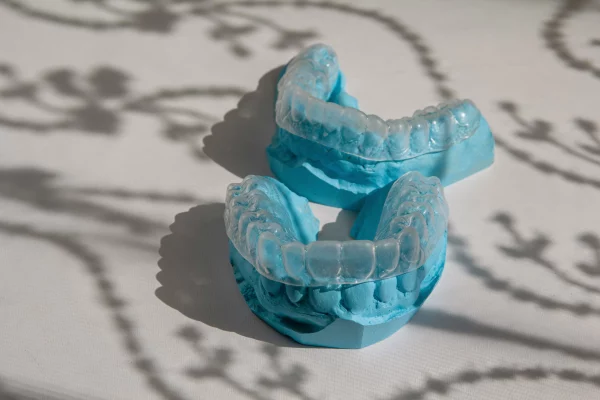Invisalign represents a widely favored alternative for individuals seeking orthodontic correction without the conspicuous appearance of traditional metal braces. Yet, a frequent question persists: How long does the Invisalign process actually take? Naturally, the duration varies, influenced by individual dental conditions, patient compliance with prescribed usage, and even age-related factors.
This article will outline the typical Invisalign treatment timeline, examine variables that may impact its length, and offer practical recommendations to help ensure the process proceeds as efficiently as possible.
Average Invisalign Treatment Time
Curious about the actual duration of Invisalign treatment? You’re certainly not alone in pondering this. While Invisalign offers a more discreet alternative to traditional braces, it isn’t an instant fix. The total treatment time can vary quite a bit. Factors such as the specific alignment issues present and the patient’s adherence to wearing the aligners play significant roles in determining how long the process takes.
How Many Months Does Invisalign Take?
Invisalign treatment duration varies considerably, depending on the severity of dental alignment issues. For individuals presenting with mild spacing or minor crowding, the process typically spans approximately 4 to 8 months. Cases of moderate complexity may require 10 to 14 months to achieve the desired results. Meanwhile, complex cases, those involving significant misalignment or crowding, often extend to 18 months or more. While some patients may observe visible improvement within a few weeks, others should anticipate a more extended timeline before substantial changes become apparent.
Factors That Influence Invisalign Duration
The duration required for Invisalign treatment is influenced by several factors, each playing a significant role in the overall timeline.
To begin with, the complexity of dental misalignment is crucial, cases involving major rotations or significant movement of teeth will naturally require more time to correct. Age is another important variable; adolescents generally experience faster tooth movement compared to adults, likely due to differences in bone density and biological responsiveness.
Patient compliance is equally vital. Consistently wearing the aligners for the recommended 22 hours per day is fundamental, as insufficient wear time can substantially delay progress. Additionally, individual biological responses to treatment differ; some patients’ teeth respond more quickly to orthodontic pressure, while others may experience slower movement.
Finally, the specific type of tooth movement required such as rotations or the repositioning of molars can further impact the treatment duration. Each of these elements collectively determines the total time necessary to achieve optimal results with Invisalign.
Fastest Possible Results with Clear Aligners
For individuals with mild orthodontic needs who adhere consistently to their aligner schedule, treatment may be completed within approximately three to six months, a relatively brief duration. Certain adjunctive devices, such as Propel or AcceleDent, have been introduced to potentially accelerate tooth movement. However, these technologies are not universally appropriate and should be utilized solely under the guidance and supervision of a qualified dental professional. Self-administration without proper oversight is not advised.
Invisalign Timeline by Case Type

Smiles, much like fingerprints, exhibit remarkable individuality, each one has its own quirks. Invisalign treatment is hardly a uniform process, either. For some individuals, the journey to dental alignment might conclude within a few months, while others may require well over a year, particularly when faced with more complex orthodontic challenges such as pronounced overbites, underbites, or significant misalignment. In contrast, mild crowding or minor gaps can often be addressed relatively swiftly. Gaining a clear understanding of the typical treatment duration, tailored to the specifics of one’s dental needs, is essential for establishing realistic expectations and maintaining motivation throughout the process.
Mild Alignment Issues
For individuals presenting with minor dental misalignments, such as slight crowding, minimal spacing, or a subtle midline discrepancy, Invisalign treatment may yield results in a relatively short period, often within six months. Typical indications include:
- Mild anterior crowding
- Small interproximal gaps
- Slight deviations of the dental midline
Patients with these presentations are often considered suitable candidates for Invisalign Express. This streamlined protocol involves fewer aligners and generally concludes treatment in approximately five months.
Moderate to Complex Cases
For individuals with moderate malocclusion, such as overbite or crossbite, Invisalign remains a viable treatment option; however, the typical duration ranges from approximately 12 to 18 months. Achieving optimal results in these cases frequently necessitates the use of attachments, small, tooth-colored buttons affixed to the teeth, which enable the aligners to exert targeted pressure.
In more intricate scenarios, additional interventions may be required. These can include interproximal reduction (a process involving minor reshaping of the teeth), the use of rubber bands or elastics to correct bite alignment, and, in some cases, a secondary refinement phase involving supplementary aligner trays.
Invisalign for Teens vs. Adults
Adolescents generally experience faster results with Invisalign, primarily because their teeth and jaws are still developing, which facilitates easier movement. Additionally, most Invisalign trays designed for teens include compliance indicators, small blue dots that gradually fade with consistent wear, allowing both dental professionals and parents to monitor usage effectively.
For adults, the treatment timeline often extends somewhat. Factors such as previous dental procedures, periodontal concerns, or reduced bone flexibility can contribute to a slower orthodontic process. As a result, achieving desired outcomes with Invisalign may take longer for adults compared to teenagers.
How to Speed Up Invisalign Results

A significant number of individuals seek a more aligned smile in the shortest time possible. Although Invisalign generally offers improved efficiency and comfort compared to traditional braces, there are established strategies to further expedite progress without compromising results. Adhering strictly to recommended aligner wear, maintaining optimal oral hygiene, and utilizing adjunctive aids such as chewies or vibration devices can meaningfully influence treatment timelines.
Wearing Aligners as Directed
Strict adherence to aligner wear is essential. Patients must maintain usage for a minimum of 22 hours daily.
In practice, aligners should only be removed for meals, consumption of beverages other than water, and oral hygiene routines such as brushing and flossing. Immediate reinsertion after eating or snacking is critical to ensure continuous treatment effectiveness. The concept of “cheat days” is counterproductive; intermittent noncompliance can significantly delay desired orthodontic outcomes. Even brief lapses in daily wear may result in a prolonged treatment timeline, underscoring the importance of consistent aligner use.
Avoiding Delays with Attachments and Adjustments
If your orthodontic treatment involves attachments, those small, tooth-colored bumps, they play a critical role in ensuring the aligners can exert proper force for complex tooth movements. Maintaining these attachments is important for treatment effectiveness.
It’s advisable to avoid hard or sticky foods, as these may dislodge the attachments. Should an attachment come off, notify your dentist promptly so it can be replaced without delay. Timely replacement helps prevent disruptions to your treatment schedule.
Using Invisalign Accessories Like Chewies or Accelerators
Certain patients utilize “chewies”—small foam cylinders designed to assist in seating aligners more securely against the teeth. This practice aims to optimize aligner fit and enhance the effectiveness of orthodontic movement.
Additionally, there are accelerator devices that employ gentle vibrations to encourage bone remodeling. While such devices are not universally required, they may offer benefits in select cases. Their use should always be guided by the recommendations of a qualified provider.
Monitoring Progress Throughout Invisalign Treatment
Maintaining adherence during Invisalign treatment involves more than simply switching trays as scheduled; it requires ongoing, active involvement in monitoring your progress to confirm that tooth movement aligns with the expected plan. Routine dental evaluations remain essential, as does the use of digital resources such as the My Invisalign app, which allows both patients and providers to detect potential complications at an early stage. Consistency and vigilance throughout the process are critical to minimizing setbacks and achieving the intended results. Remaining engaged and informed at every phase significantly enhances the overall effectiveness of the treatment.
Frequency of Office Visits and Checkups
Typically, patients are scheduled to visit their Invisalign provider every six to eight weeks. During these appointments, the dentist evaluates the progress of tooth movement, provides the next set of aligners, and makes any necessary adjustments to the treatment plan. Some providers also offer virtual check-ins, which can minimize the need for in-person visits.
How Dentists Track and Adjust Progress
Digital scans and photographs serve as essential tools for monitoring tooth movement and treatment progress. If deviations from the intended alignment occur, your dental provider may suggest several interventions. These can include extending the wear period for your current trays, prescribing refinement aligners, or adjusting attachments and the frequency of aligner changes. It’s important to recognize that orthodontic progress is not always linear; minor adjustments are fairly routine. Maintaining consistent communication with your provider is key to achieving optimal results.
What Happens If Teeth Aren’t Moving as Expected?
If progress appears to stall during your Invisalign treatment, your dentist has the ability to make necessary adjustments. Often, this involves rescanning your teeth and providing refinement trays to address any persistent issues. The need for refinements is common throughout many Invisalign cases and is typically included in standard treatment plans.
It is important not to disregard potential problems, as doing so may result in prolonged treatment or unsatisfactory outcomes. Open communication with your dental professional is essential to ensure optimal results.
Post-Treatment Steps After Invisalign Ends
Completing your final Invisalign tray certainly marks a significant milestone in your orthodontic treatment. Yet, it’s important to recognize that this achievement does not signify the conclusion of your journey. Maintaining the alignment of your teeth requires diligent adherence to post-treatment protocols, with retainer use being paramount. Neglecting this step can result in orthodontic relapse, undoing months of progress. Additionally, scheduled follow-up appointments with your dentist allow for continued monitoring of tooth stability and facilitate any necessary adjustments. In summary, while finishing Invisalign is a noteworthy accomplishment, sustained effort and compliance are essential to preserve your results over the long term.
Wearing Retainers to Maintain Results
Upon completion of Invisalign treatment, patients should remain vigilant, as teeth possess a natural tendency to relapse without adequate retention measures. Clinicians generally advise full-time retainer wear during the initial post-treatment months. Subsequently, transitioning to nighttime-only wear is recommended for ongoing stability. Long-term adherence to this regimen is essential to maintain alignment.
How Long You’ll Need Retainers After Invisalign
Teeth aren’t exactly known for staying put especially after orthodontic treatment. Retention is, quite frankly, a lifelong commitment. Here’s how it usually goes: For the first three to six months post-treatment, patients are expected to wear their retainers for about 20 to 22 hours a day. After this initial period, nightly use is generally considered sufficient to maintain alignment.
It’s important to note that neglecting to wear retainers as recommended can quickly compromise months of orthodontic progress. Consistency remains essential to prevent teeth from shifting and to preserve the results achieved through treatment.
Frequently Asked Questions (FAQs)
1. How long does Invisalign take to work?
Most people begin to notice visible changes within the first few weeks of Invisalign treatment. Full treatment typically lasts between 6 to 18 months, depending on the complexity of the case and how well the patient follows instructions. Each new aligner tray gently shifts the teeth into better alignment. Progress is gradual but steady with consistent daily wear. Regular checkups allow your provider to monitor your progress and make any necessary adjustments. Staying committed to the treatment plan is key to achieving the best results.
2. Can I speed up my Invisalign treatment?
Yes, but only if done safely under your provider’s supervision. The most reliable way to stay on track is to wear your aligners for 22 hours a day, every day. Some patients may use vibration tools or switch trays more often—but only with professional guidance. Trying to rush the process by skipping trays or reducing wear time can actually delay your results. It’s always best to follow your dentist’s recommendations closely.
3. Do teens finish Invisalign faster than adults?
Yes, but only if done safely under your provider’s supervision. The best way to stay on schedule is to wear your aligners for 22 hours a day, every day. Some patients use vibration tools or change trays more frequently, but only with professional guidance. Skipping trays or cutting wear time may seem faster, but it can actually delay your progress. Always follow your dentist’s instructions to ensure safe and effective results.
4. What happens if I don’t wear my aligners 22 hours a day?
Wearing aligners less than recommended can significantly delay your progress. Teeth require steady, gentle pressure to move into place correctly. Inconsistent wear can cause gaps to return, trays to stop fitting, and treatment steps to be repeated. If your aligners feel especially tight or painful after a break, don’t force them—contact your provider first. Following the schedule closely is key to a smooth, successful outcome.
5. Is Invisalign quicker than traditional braces?
In many cases, yes, especially for mild to moderate alignment issues. Invisalign can often deliver results in 12 to 18 months, while traditional braces may take 18 to 24 months or more. However, treatment time depends on the complexity of your case and how closely you follow the plan. Some situations may still be better suited for braces. Your provider can help you decide which option aligns best with your smile goals.
Your Invisalign timeline doesn’t just depend on your teeth, it depends on your commitment. Whether you’re just beginning to explore orthodontic options or ready to start treatment, the right provider will guide you every step of the way.
Let us help you determine if Invisalign is the right choice for your smile, your schedule, and your life.
Book a consultation today and take the first step toward results you can see—and feel.


